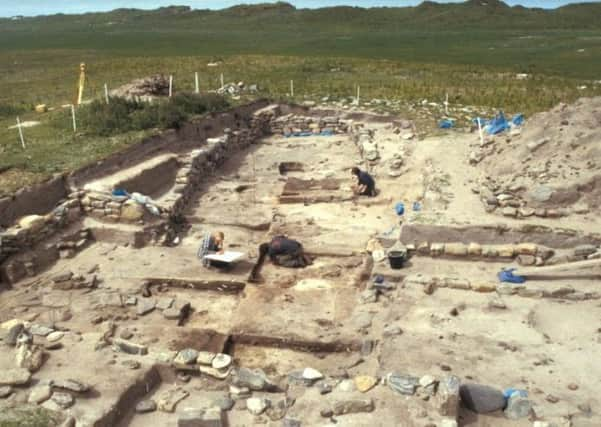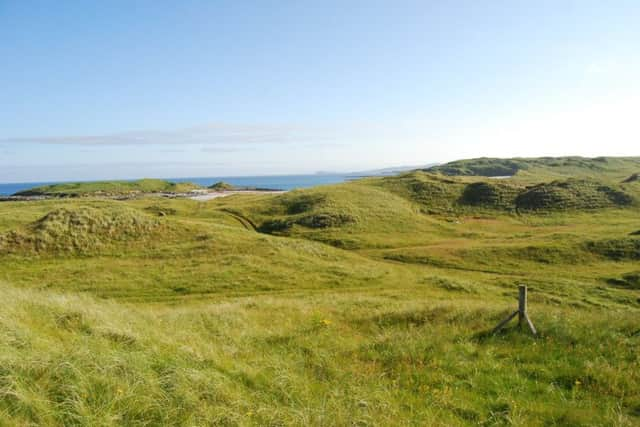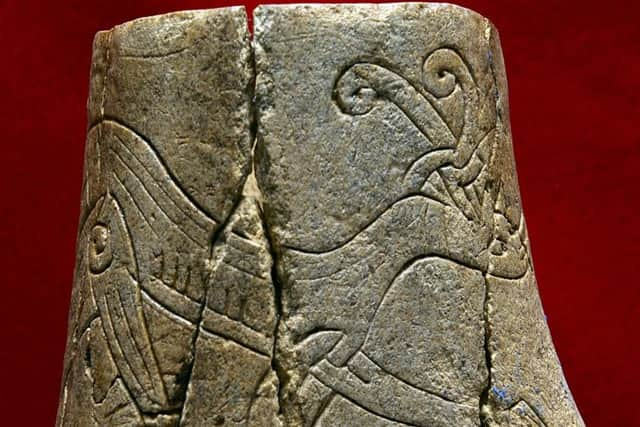Telling the story of the Hebridean Norsemen


The exhibition charts changes in the daily life of the inhabitants of the islands, the importance of craft activities and the artistic and religious life of the immigrants.
Archaeological artefacts from a number of sites across the Outer Hebrides are exhibited, including finds from Cardiff University’s decade long archaeological excavation at Bornish in South Uist.
Advertisement
Hide AdAdvertisement
Hide AdThe Director of the excavations, Professor Niall Sharples said: “It is a great pleasure to display a selection of the material recovered from Bornais, as they emphasise the importance of the Hebrides in the Viking world.


“There are a range of objects that come from regions as far apart as Norway and Greece, and much from near neighbours Ireland, England and Shetland.
“The inhabitants of Bornais clearly included an important family that were of the highest rank in the Kingdom of Man and the Isles”.
The exhibition also features artefacts from the 30 years of excavation by Iain Crawford at Udal, in North Uist which are a part of the Museum nan Eilean collections.
Advertisement
Hide AdAdvertisement
Hide AdIn addition, there will be a small number of artefacts from the Kilphedar excavations led by Professor Mike Parker Pearson, in conjunction with Sheffield University.


Although the finds from both Bornais and Kilphedar are still to go through the formal Treasure Trove procedure, Museum nan Eilean are excited to have them on display in this special exhibition with kind permission from the excavators and Historic Environment Scotland.
HES supported, with part-funding through archaeology programme grants, the excavations in Bornish and Kilphedar. Other artefacts on display are from the Museum nan Eilean collection, including objects from various sites across the Outer Hebrides, many acquired by the museum through Treasure Trove.
Kevin Murphy, Archaeologist for Comhairle nan Eilean Siar said: “This exhibition provides a look at life in the Outer Hebrides during the Norse Period - what people farmed and ate, what they wore, the type of work they carried out and their links to the wider Norse world.
Advertisement
Hide AdAdvertisement
Hide Ad“The artefacts come from all over the islands and show a distinct cultural identity, in contrast to the earlier society and will be of great interest to the public and scholars alike.”


A special event for the local community to come along for a private viewing will be held on Wednesday 21 June from 5-6pm – all welcome.
Staff from Treasure Trove Scotland will be holding talks and workshops throughout the day in Museum nan Eilean, and in Lewis later in the week.
The exhibition runs in conjunction with the Island Book Trust Archaeology Conference which is in Uist between 3 & 5 August.
Advertisement
Hide AdAdvertisement
Hide AdThe conference will cover a wide spectrum of archaeological knowledge and interpretation gained throughout the Outer Hebrides, including the investigations at Udal and Bornish.


Hebridean Norsemen will be on display from 9 June until 2nd September in Museum nan Eilean, Benbecula, Outer Hebrides.
Treasure Trove Events:
Wed 21 June: Museum nan Eilean, Benbecula; Lunchtime Talk 1-2pm; TT Workshop 2.30 – 4pm (Community view of exhibition 5-6pm) TT workshop & Finds 6.30- 8pm
Friday 23 June: Museum nan Eilean, Lews Castle; Lunchtime Talk 1 – 1.30pm; Talk 5.30 – 6.30pm
Sat 24 June: Museum nan Eilean, Lews Castle ; Finds Day 10am – 4pm